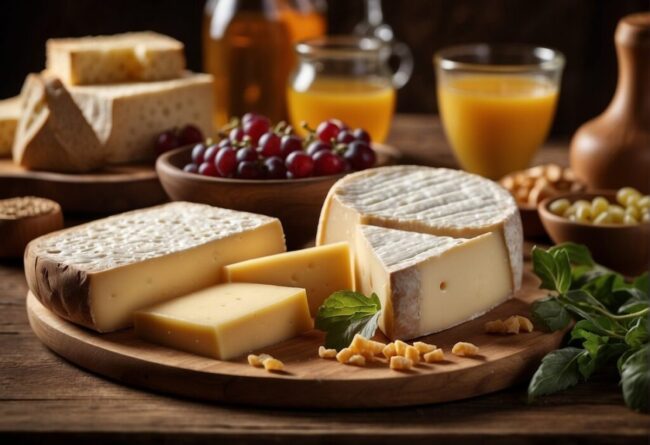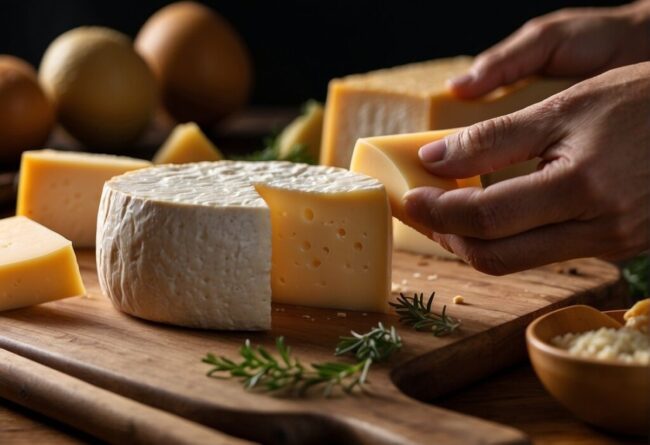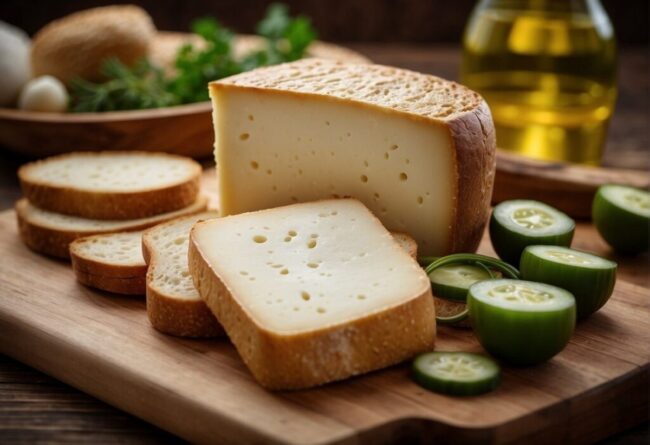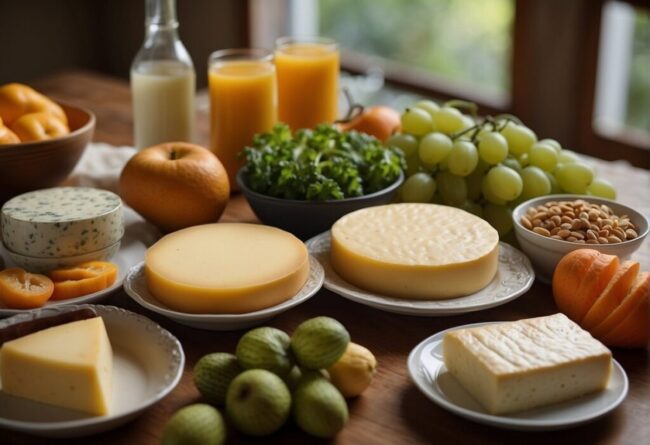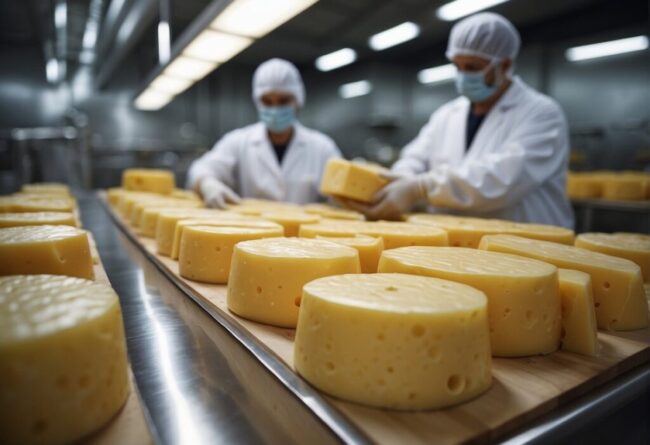3 Bold Limburger Cheese Substitutes to Try
Limburger cheese substitutes provide bold, complex flavors without overpowering the dish.
Some replacements offer the same creamy texture, while others introduce a gentler tang.
Aged cheeses, spreads, and savory dishes still carry that signature depth with a strong alternative.
The History of Limburger Cheese
Limburger cheese is a pungent, soft cheese known for its strong aroma and creamy texture. It is traditionally paired with rye bread and onions.
Roots in Europe
Limburger cheese has a semi-soft texture and features a reddish-brown rind with a creamy inside.
This unique cheese traces its beginnings back to the 19th century in the Duchy of Limburg, which now includes parts of Belgium, the Netherlands, and Germany.
Belgian Trappist monks were among the first to produce it, drawing from traditional monastic recipes.
Their commitment to quality set Limburger apart with its distinct flavor profile that many appreciate today.
Exploring this cheese leads to an appreciation for both its rich history and craftsmanship in Europe’s culinary landscape.
The blend of flavors reflects centuries of dedication by these skilled artisans.
Adoption in America
In the 1860s, Limburger cheese made its way to America through a group of Swiss immigrants.
These settlers brought their cherished recipe with them and began producing this unique cheese in Green County, Wisconsin.
Today, Monroe stands as the sole location in the United States where Limburger is still crafted, preserving its strong and unmistakable taste.
This small town continues to celebrate a rich tradition that began over 160 years ago.
The dedication of local producers keeps this distinct flavor alive for those who appreciate it.
Discovering Limburger offers a glimpse into Wisconsin's flavorful history and cultural heritage.
Limburger Cheese Replacements
Substituting Limburger cheese provides strong, pungent alternatives for bold-flavored dishes. These choices maintain the creamy texture while adding depth.
Cheese Substitutes with Similar Flavor
Exploring washed-rind cheeses can lead to exciting flavors reminiscent of Limburger.
Liederkranz stands out as an American alternative, sharing a similar scent profile.
Munster offers a noticeable aroma, though it is milder than Limburger's powerful presence.
Taleggio cheese presents itself as semi-soft with a strong smell that captures attention.
Cheeses like these provide the bold scents often sought after in Limburger, making them worthy substitutes for any cheese lover.
Consider trying them to experience their unique qualities firsthand; they might surprise you!
Cheese Texture Alternatives
Brick cheese serves as a great substitute when Munster or Liederkranz is unavailable.
Fontina presents a semi-soft option that mimics the creamy texture found in Limburger.
Brie, while milder in scent, also shares that delightful creaminess associated with Limburger.
These cheeses provide the same softness needed for recipes without carrying over Limburger's strong smell.
Enjoy experimenting with these alternatives to achieve satisfying results in your dishes.
Each option ensures deliciousness while keeping things light on aroma.
Tips for Flavor Pairing
Substitutes for Limburger cheese can offer interesting flavors.
Aged Cheddar brings a sharp taste without the strong smell associated with some cheeses.
Blue Cheese, including varieties like Gorgonzola and Gorgonzola Dolce, delivers a bold flavor that stands out.
Feta adds a tangy element and features a crumbly texture that differs from Limburger's creaminess.
While these options may share some flavor characteristics, none replicate Limburger's distinct profile completely.
Enjoy experimenting with these alternatives to find new favorites in your dishes!
Flavor and Texture of Limburger
The flavor and texture of Limburger cheese are rich, creamy, and bold. Its intense aroma softens with aging, creating a smoother taste.
Smell and Taste Guide
Limburger cheese leaves a memorable mark with its powerful smell, which is well-known and striking.
Beneath that bold aroma lies a flavor that surprises many with its tangy and earthy notes.
Aging this cheese enhances the taste, evolving from mild and buttery to more intense and intricate profiles.
Discovering Limburger provides an experience beyond expectations; it challenges perceptions of what cheese can be.
Enjoying it opens the door to unique culinary adventures for those willing to try something different.
This distinctive cheese has earned its place in both traditional dishes and modern cuisine alike.
Texture and Aging
Aging Limburger cheese takes two to three months, leading to a unique texture.
Initially, the cheese has a firm and crumbly feel.
As time passes, it transforms into a smooth and creamy delight.
This process gives Limburger its soft yet slightly semi-soft consistency that many appreciate.
The evolution of its texture plays an essential role in the overall flavor experience as well.
Enjoying this aged cheese opens up new taste sensations that are truly distinctive.
Limburger Cheese and Nutrition
Limburger cheese provides a good source of protein and calcium. Despite its strong smell, it offers nutritional benefits similar to other soft cheeses.
Nutrition Breakdown
Limburger cheese serves as a valuable source of important nutrients.
This cheese packs a punch with protein, essential for repairing and growing muscles.
Calcium plays a crucial role in keeping bones strong while also helping nerves communicate and muscles function properly.
Phosphorus complements calcium, contributing to healthy bones and teeth.
A standard serving delivers significant amounts of these nutrients, enhancing your overall diet with each bite.
Including Limburger can be an enjoyable way to boost your nutrient intake effectively.
Food Choices to Consider
Limburger cheese offers a strong, nutty flavor that adds depth to meals.
Its unique taste comes from a complex mix of fatty acids, making it both interesting and nutritious.
The aroma can be intense, so it may not suit every dish or preference.
Monitoring the fat content is essential for those watching their intake for health reasons; moderation plays an important role in enjoying this cheese responsibly.
Saturated fat levels should align with daily recommendations to maintain balance in your diet.
When incorporating Limburger into your meals, these factors help ensure it complements your overall eating habits well.
Cheese Quality and Production
Cheese quality and production impact texture and flavor. Proper aging and ingredient selection contribute to a well-balanced cheese.
How to Make Limburger Cheese
Limburger cheese is known for its strong aroma and unique taste.
Production begins with pasteurizing milk, mainly from cows, to remove harmful bacteria.
After this step, curdling happens by adding bacterial cultures and rennet to the milk.
The next stages involve cutting the curds to release whey and cooking them at a higher temperature for better texture.
Experts like Myron Olson at Chalet Cheese Cooperative have perfected these traditional methods over time; this cooperative stands as North America's sole Limburger producer, ensuring each batch reflects years of craftsmanship.
Finally, pressing the curds into molds shapes the cheese into its recognizable form.
Things That Impact Cheese Quality
Factors affecting Limburger cheese quality include the milk's freshness and its balance of fats and proteins.
Cleanliness in the production area is essential for preventing contamination, ensuring that equipment remains spotless.
The type of cow and its diet also significantly influence milk composition, which directly impacts flavor.
Temperature and humidity during manufacturing contribute to successful aging, allowing for desirable texture development.
At Chalet Cheese Co-op, attention to these details helps maintain high standards in cheese making.
Recognizing these influences enhances appreciation for the effort involved in crafting quality Limburger cheese.

